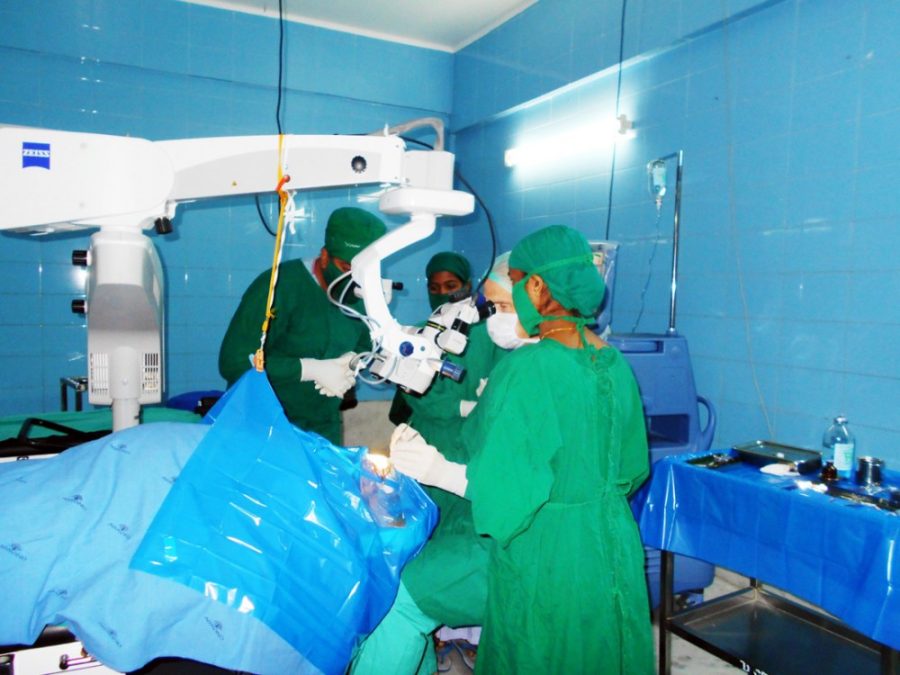Dr. Joseph Miller, a UA professor and head of the department of ophthalmology and vision science at the College of Medicine — Tucson, recently brought a ground-breaking and cost-effective method for surgically removing cataracts to the UA from India.
In India, both the proximity to care and the cost were a major issue in taking care of cataracts, the clouding of the clear lens of your eye.
Aravind Eye Care System in India figured out a way to drive the price point of the surgery to zero while still having an operable business that succeeds in doing the surgeries, Miller said.
After performing the procedure alongside the surgeons of Aravind Eye Care System, Miller saw the utility of bringing such an operation to the U.S.
The surgical technique, known as manual small-incision cataracts surgery, required several innovations in order to make it viable, such as changing how the wound heals.
“When the incision is made, it’s made in a way that, like Tupperware, when the wound closes, there are three different planes to the incision [which] interlock with each other, and the wound becomes self-sealing,” Miller said.
With a self-sealing wound, no stitches are necessary, Miller said.
“Each one of those stitches could break and either irritate the eye or become infected,” Miller said. “If you’re living in the middle of nowhere and you can’t get access to a doctor, that little broken stitch could lead to an ulcer that could cause you to lose your eye.”
The World Health Organization estimates that there are about 20 million functionally blind individuals afflicted with cataracts worldwide, accounting for about half of all blindness. Millions of others have drastically reduced eyesight due to their cataracts.
For many, a fix is not as simple as heading to the local ophthalmologist and scheduling a surgery. The nearest care facility could be hours away or the operation could be prohibitively expensive. Phacoemulsification is the current standard of care for cataracts removal and is costly.
“Cataract surgery in the U.S. is becoming more and more expensive as we add new technologies with high price tags,” said Dr. Robert Snyder, the former head of the department of ophthalmology and a professor of biomedical engineering.
A low-cost, affordable cataracts surgery is necessary here, Snyder said.
“You’re having to choose between your surgery at $2000 or $3000 or other choices you have to spend money on, and all of a sudden you start pushing off your surgery and you stop enjoying life as much because you can’t see as well as you need to,” Miller said.
By bringing this method to the local community, Miller and Snyder, who serves as an advisor on this project, hope to provide a safe, effective and affordable alternative to phacoemulsification.
“Sometimes, you can’t afford the new F-250 with the extended cab and four-wheel drive, but you can get a Ford Ranger,” Miller said. “They’re both safe, they can get you from point to point, they both have airbags and they’re both reliable. The same thing needs to be introduced in health care.”
—Follow Laeth George @DailyWildcat









